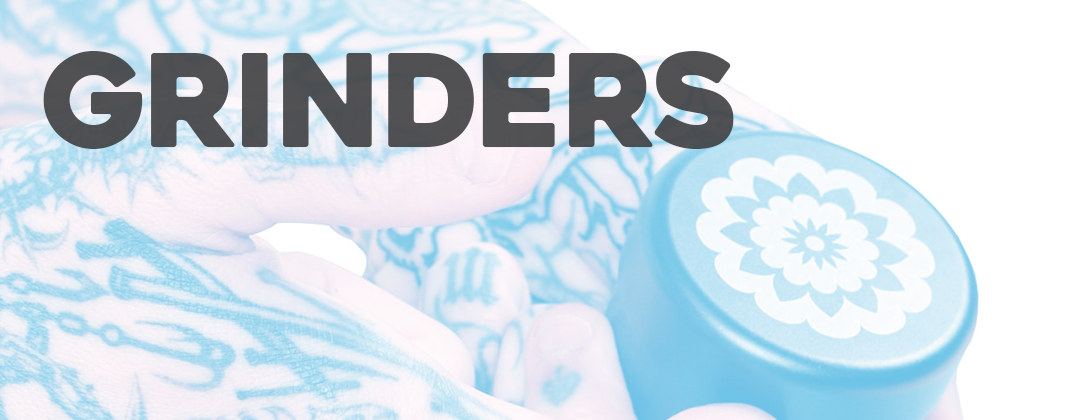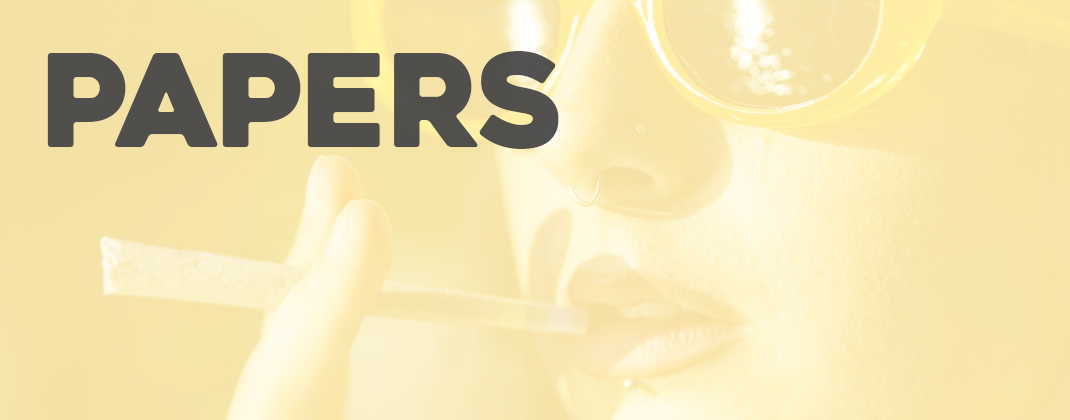How are Hemp Wraps Made?
Posted by DaySavers Team on Nov 21st 2025
We all love smoking blunts. Me, in particular.
But in a world where we're all looking for alternatives to tobacco products for health or legal reasons, the modern blunt or pre-rolled blunt tube is often made with a hemp wrap. Slow-burning with a slightly earthy taste that always compliments flower (it is the same plant, after all), hemp wraps offer a healthier option than the traditional tobacco based blunt wraps.
But what is a hemp wrap blunt made of? How are hemp wraps made? And what other hemp wrap blunt options are out there?
Don’t worry; you have questions and the DaySavers have answers.
What are Hemp Wraps Made Of?
It seems obvious, but hemp wraps are made of, well, hemp. Legally defined (for now, anyway) as cannabis plants with a THC percentage below 0.3%, hemp is an incredibly useful plant that can be used to make everything from clothing to food to paper, as well as hemp wraps.

Because the THC levels are so low, hemp is generally non-psychoactive, though it can contain higher-than-usual quantities of other cannabinoids, such as CBD. However, the heat used in the hemp wrap manufacturing process usually gets rid of any residual cannabinoids, so if you see a hemp wrap claiming to contain CBD – I'd be skeptical!
Now, you probably noticed that I mentioned that hemp can be used to make both hemp wraps AND paper, and that’s because the two are different, made with different processes and even different parts of the plant itself.
Hemp paper – including hemp rolling papers – is made mostly from the long fibers found in the stalks of the plant. It’s also a pretty standard paper-making process that turns those fibers to a pulp, then drained over a screen, pressed, dried and cut into sheets. (It’s the refinement of the fibers and technology of the paper making process that dictates how thick the papers can be made.) But the process is different for making hemp blunt wraps.
How are Hemp Wraps Made?
Hemp wraps are so different from hemp papers because they are made differently. Hemp paper is just paper made with hemp fibers instead of wood fibers. But hemp wraps are their own animal entirely.
Instead of just using the fibers, the entire plant is ground into a coarse powder. The use of all parts of the plant, including the leaves, is what gives the hemp wrap its distinctive flavor, which is missing – or at the least, heavily diminished – in hemp rolling paper.
But the ground hemp matter doesn’t stick together very well, so it is mixed with other ingredients to help turn it into a nice cohesive sheet. The ingredients used to hold hemp wraps and tobacco blunt wraps together is usually a carefully guarded secret. These ingredients work like a natural glue and moisture manager, helping make the mixture that is created more cohesive and easier to press together.
Interestingly enough, because they are made with ground hemp matter instead of fibers, it is the water bonds – the literal chemical bonds between the water molecules – that give hemp wraps their strength. Which is why they are more susceptible to drying out and crumbling when those bonds evaporate (while hemp paper, made with fibers, is not), but we’ll get more into that in just a bit...
Once the hemp matter mix is correct, it is spread out and pressed into sheets. Unlike hemp rolling papers, these are left a little thicker to give a more classic blunt feel.
DID YOU KNOW?
The reason hemp wraps feel and smoke so like classic blunts is that the process used to make them come from the tobacco industry. The tobacco wraps that most cigarillos are rolled with are made in a similar process, only using tobacco sheets instead of hemp sheets. It’s how they get them so uniform to make sure each cigarillo is the same (and why Backwoods and similar style cigarillos are so different).
After the hemp matter is pressed into sheets, they are slowly dried and cured, with careful attention paid to the heat and humidity used in order to keep those water bonds strong and intact.
Once dried, the hemp wraps can be cut and packaged or used to make pre-rolled blunt cones or tubes.
What are Hybrid Hemp Wraps and How are They Made?
So as noted, one of the biggest difficulties in dealing with hemp wraps and hemp wrap products is keeping them hydrated. Since the water molecules are what give the hemp wraps their strength, those bonds begin to break when they dry and hemp wraps can begin to crumble.
That’s why we worked to develop our hybrid hemp wrap, a less water-sensitive version of hemp wraps that maintain the thickness, flavor notes and slow-burning nature of traditional hemp wraps.
We call them “hybrid” hemp wraps because the process used to make them is mash-up of how hemp paper and hemp wraps are made.
Hybrid hemp wraps contain a larger percentage of hemp fibers than hemp wraps and are made more like hemp paper. They have a higher gsm (grams per square meter, or how paper thickness is judged) than hemp paper, but a lower gsm than hemp wraps.
- Rolling Paper: 12-14 gsm
- Cigarette Paper: 28-30 gsm
- Hybrid Hemp Wrap: 50 gsm
- Hemp Wrap: 60-70 gsm
- Printer Paper: 100 gsm
We use the hybrid hemp wrap to make our DaySavers pre-rolled blunt cones and our DaySavers pink and green artisan tubes. They burn slowly and evenly and have the same earthy overtones as traditional hemp wrap.
And, because of the larger percentage of hemp fiber, they are less dependent on the water bonds to hold them together, so they remain pliable for longer and are far less likely to dry out and crumble.
How are Hemp Wraps Flavored?
Some of the most popular hemp blunt wraps in the country are flavored hemp wraps, like grape or vanilla or berry, among others.

These flavorings are typically artificial flavorings and are typically sprayed on the sheets after those are formed. These artificial flavorings have very strong smells, but not much taste. However, since part of your taste is interpreted through smells, you still get a sense of the flavor.
To make sure the flavor sticks to the hemp wraps and don’t evaporate too fast, many companies use what are called “humectants,” a substance that pulls water from the air and helps the flavors adhere to the hemp wraps, though it can leave them a little wet.
At DaySavers, we don’t add any extra humectants to our wraps. In fact, we don’t flavor our hemp wraps and hybrid hemp wraps at all. It’s all part of our promise of transparency, like how we always test all of our products to the highest standards in the industry. The only thing we do add is some food-grade dye, and only to the hybrid hemp wraps. It gives them a richer color, allowing us to make them pink or green without changing the overall formula or flavor.
Instead of adding flavor to the hemp wrap, we use infused premium wood filter tips to add a little something different. We infuse our wood filter tips with either natural vanilla or sugar and offer those with our Fill-a Blunts pre-rolled hemp wrap blunt tubes. (We also use those same flavored wood filter tips on our DaySavers Pre-Rolled Tubes, and we even sell them on their own so you can use them to roll your own or as flavored pre-roll holder and filter...)
Because the wood filter tips are infused, the taste stays on your lips and never gets in the way of your flower terpenes. It’s a subtle and tasty addition to any blunt.
Final Thoughts on Hemp Wraps
Now you know how hemp wraps are made, and how they are different from both hemp paper and hybrid hemp wraps, but the truth is, you can’t always know what’s in your hemp wraps and how they are made.
Unless you check, of course. And we do.
Our Fill-a Blunts line is made in Europe, with hemp grown and sourced under European Union rules. Our hybrid hemp wraps are made in the US with US-grown hemp.
We also test all of our wraps and papers for heavy metals, pesticides and microbials. We don’t have to, but we want to know what we’re smoking, and we want you to know as well. Especially with hemp wraps, which are prone to microbial growth during processing because of the amount of biomass used.
Also, be skeptical of marketing lingo and language, like “organic” or hemp wraps that claim to have CBD. Those are likely untrue.
While hemp rolling papers are thin and made of hemp fibers, hemp wraps use all parts of the plants and are thicker for a classic blunt feel.









